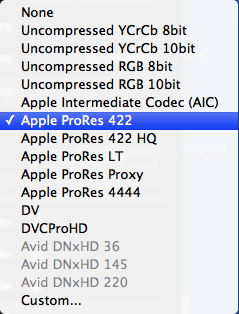Review: Divergent Media ScopeBox 3.0
For scopes and DVR functionality, Divergent's ScopeBox 3.0 outdoes Adobe's late, lamented OnLocation, particularly because it works with a range of cameras, not just those with FireWire outputs. If you've been wondering what you were going to do for DVR/scope functionality on the Mac now that Adobe has exited the market, you should definitely give ScopeBox a try.
Recording
Capturing direct to disk is a great time saver, and ScopeBox lets you access all the QuickTime codecs installed on your system. In my case this meant ProRes, but no flavors of Avid DNxHD. The functionality is great, but you'll have to dig hard to find these and related controls. Specifically, they're only available from the Clip window (Figure 5, below), which typically you don't see after you start capturing, and you can't access them from the Source window, which is (IMHO) where most users would look for them. It's pretty well marked in the manual, so this shouldn't cause most users any problems.

Figure 5. ScopeBox can convert your captured footage to any QuickTime codec installed on your system, including ProRes, but not Avid DNxHD on my system.
During capture, ScopeBox displays an explanation point in the Source dialog to let you know that you're dropping frames. Otherwise, you can record other alerts warning about potential problems with the captured file, including the following:
- Chroma Excursion, which is triggered when the chrominance level of your signal exceeds the selected value
- Video Slug, which is triggered if no part of your signal exceeds the selected threshold
- Audio Peak, which is triggered when audio levels exceed the selected threshhold
- Gamut Excursion, which is triggered when ScopeBox detects that color will be lost or clipped in the YUV to RGB conversion
- Luma Excursion, which is triggered when the captured file exceeds both maximum and minimum values.
Alerts are saved as separate files with the captured footage in HTML, CSV, or FCP/FCP X XML. Alert files are saved in the clip window, so it's pretty easy to know when you have a problem. Otherwise, with the first two formats, you have to open the file to identify any issues, while the latter two will display markers in the respective products for any triggered alerts.
For scopes and DVR functionality, I actually like ScopeBox better than OnLocation, particularly because it works with all of my cameras, not just those with FireWire outputs. If you've been wondering what you were going to do for DVR/scope functionality on the Mac now that Adobe has exited the market, you should definitely give ScopeBox a try.